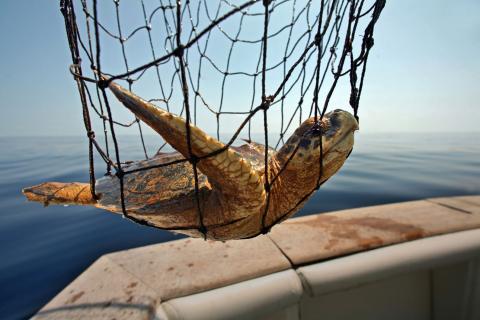After the Deepwater BP oil spill in April, teams of scientists traveled to the Gulf of Mexico to document the impacts to sea turtles and their habitat. This team of sea turtle experts from NOAA and other federal and state agencies, universities, and private groups began to rescue turtles â including loggerheads and endangered Kempâs ridleys â from the Gulf.
The turtles were taken to sanctuaries, like the Audubon Nature Institute, to be cleaned and rehabilitated. There, they were given activated charcoal to help get oil out of their digestive system, their mouths were cleaned with mayonnaise, they were given fluids and antibiotics, and they were scrubbed with toothbrushes and dish detergent and more mayonnaise to remove oil from their skin. In all, almost 500 turtles were brought in to be rehabilitated; nearly three-quarters of them have been released back to healthy habitat.
As part of the Natural Resource Damage Assessment, NOAA and other trustees are now working to determine the extent of the impacts the spill had on sea turtles and their habitat in the Gulf. The teams have been conducting aerial surveys and recovering stranded turtles. We have been collecting tissue samples, including turtle egg samples. We are tracking turtles by satellite, to see if their movements have been affected by the spill. Trustees have also performed necropsies (autopsies on animals) on dead turtles to determine their cause of death and whether it is linked to the spill.
These studÂies are designed to get a better understanding of the presence and distribution of turtles in the area, what level of oil exposure they have actually experienced, and what the impact of that exposure has been. Trustees are also assessing potential adverse impacts that may have occurred from response activities, such as burning and skimming oil at sea and beach cleanup. This information will be used by the NRDA teams to develop restoration plans for these turtles and their habitat.


